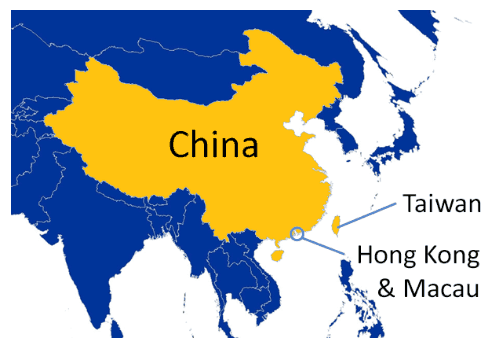UPSC Articles
International Affairs
General Studies 2:
- Effect of policies and politics of developed and developing countries on India’s interest
Taiwan, Hongkong and China

Daily Current Affairs IAS | UPSC Prelims and Mains Exam – 18th January 2020
Context:
The landslide re-election victory for the Democratic Progressive Party’s (DPP) Tsai Ing-wen in Taiwan has presented Beijing with a second pressing challenge in its backyard (along with ongoing protests in Hongkong)
Also, pro-democratic political parties swept the local district council elections in Hong Kong, which were widely seen as a referendum on the protests happening in Hongkong pressing for wider Democratic reforms
Brief Background of Taiwan
- China’s nationalist government, which was defeated in a civil war by the communists in 1949, had been exiled to Taiwan.
- Taiwan has been entirely self-ruled since then, however, China claims the island as a part of its territory
- Taiwan has a thriving democracy and has held direct elections to choose its leaders since 1996. China is Taiwan’s largest trade partner.
China’s One Country- Two system model
- This policy was originally proposed by Deng Xiaoping shortly after he took the reins of the country in the late 1970s. Deng’s plan was to unify China and Taiwan under the One Country Two Systems policy which provided autonomy to Taiwan
- Under this system, Taiwan could follow its capitalist economic system, run a separate administration and keep its own army but under Chinese sovereignty. Taiwan, however, rejected the Communist Party’s offer.
- The idea of two systems in one country is replicated again in Hong Kong and Macau when Britain and Portugal, who were running these territories under lease (since colonial times) returned it to China in 1997 & 1999 respectively. These territories was also given autonomy in its functioning in return for recognition of China’s Sovereignty over these areas.
Election results in Taiwan a referendum on China
- If the local elections in Hong Kong were a referendum on the protests, the elections in Taiwan ended up becoming a referendum on China — and specifically, on the “one country, two systems”
- The events in Hongkong whereby Chinese authorities were criticized for their handling of protestors (not calling for peace talks) revitalized the anti-China campaign in Taiwan (Independence from China)
- The opposition KMT (pro-China) – in power from 2008-16- had chosen to build economic and political bridges with China. The KMT’s stance was based on need to boost Taiwan’s economic opportunities.
- Polls conducted in Taiwan by the National Chengchi University in June 2019 showed that 56.9% identify as being only ‘Taiwanese’, up from 54.5% a year earlier
- On the choice between independence and reunification, 86.1% favoured maintaining the status quo (Not accede to China’s model)
Consequences for Taiwan
- With Ms. Tsai who is at the helm of Taiwan since 2016 and her stated anti-China views, Beijing has pushed with vigour an international strategy aimed at isolating Taiwan.
- By the end of 2019, Taiwan was left with only 14 UN member states that maintain diplomatic relations, after losing the Solomon Islands and Kiribati which both shifted to recognising Beijing.
- China believe that the country’s “great rejuvenation”, which President Mr. Xi has declared as the “China dream”, will not be complete without Taiwan’s return
Consequences for China
- China believe the tide of history is on their side (with economic & military might), and that the island (Taiwan) of 23 million people (roughly the population of Beijing) will inevitably return to the fold.
- However, China needs to offer more than the stability, security, and economic growth that its model promises, when issues of identity, suffrage and values are involved
- With China aggressively pushing its mega infrastructure project Belt & Road initiative and aiming at superpower status, it has to show to the world that it is able to solve its own internal problems in a peaceful manner before embarking on taking up Global leader status.
Lessons for India
- India also follows asymmetric Federalism where by many states enjoy greater autonomy in their functioning as compared to other states (Article 371, Schedule V & VI).
- These special provision are also intended to deal with issues to identity & culture. India thus needs to handle these in a democratic manner so as to not see Taiwan/Hongkong type of protests happening in India
- In International Politics: India can always use the leverage of Taiwan and Hongkong whenever China meddles in India’s own internal issues like Kashmir/ Naga unrest.
Connecting the dots
- China’s other internal issues – Tibet and Xinjiang province
- Why there are no protests in Macau which also enjoys special powers under the One Country-Two system mode
- How US is trying to exploit this situation? Resolution/laws passed by US legislature aimed at Hongkong/Xinjiang.













